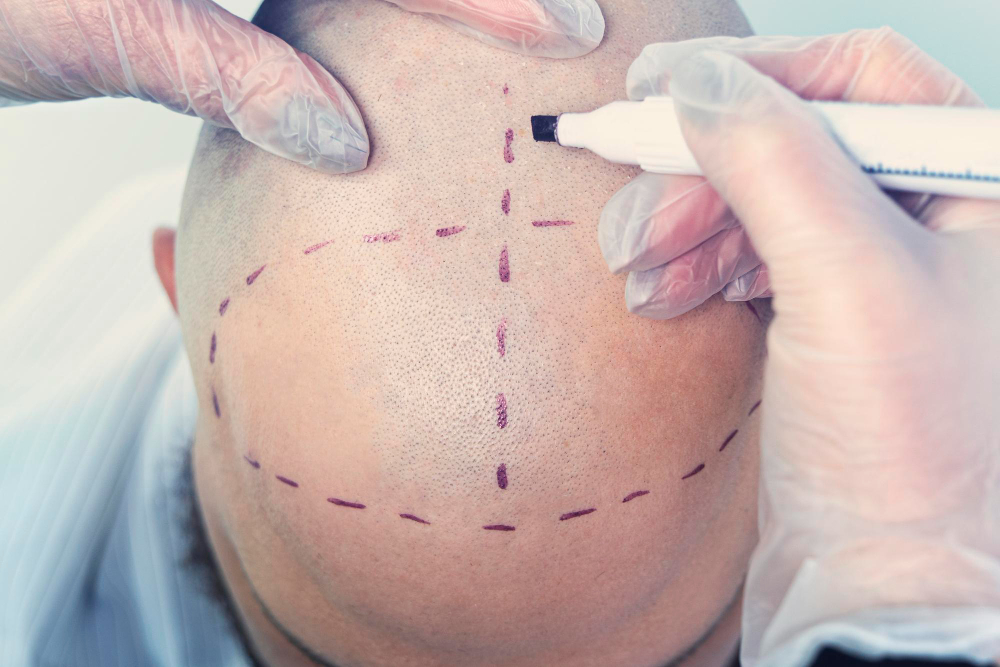
FUT METHOD: STRIP EXTRACTION
The first thought that pops into your mind when considering hair transplantation is the possibility of scarring. The initial method for hair transplantation, known as the FUT procedure, sometimes referred to as the strip method, involves cutting off an area of tissue from the scalp's back. This skin strip is then dissected using microscopes into individual grafts that are then inserted.
The major drawback of this technique is the visible scar left over the donor area of a person who is undergoing a transplant. The scars could be up to 30 centimetres wide. Most of the time, the scar tissue is slightly smaller than hair coverage, and the scar is easily observed after the procedure, particularly with shorter hair.
Many surgeons who use FUT hair transplantation say that this procedure is more for patients with small-donor areas. One solution to this issue that does not require a cut at the side of your head is hair transplantation for the body, which involves the removal of donor grafts from the beard, chest and beard.
FUE: MANUAL VS MECHANICAL EXTRACTION
The foundation for this FUE procedure for hair transplantation lies in the individual extracting of donor grafts without the necessity of cutting off skin strips. Since the grafts are taken in a single step, no permanent scarring is left over the donor's area following the procedure. However, in the context of FUE, there is an argument over the use of mechanical or manual methods for graft removal.
Many of the top clinics worldwide use what's called a micro-motor instrument to extract grafts. The tool is powered by electricity and is widely used due to its speedier extraction. Utilizing the micro-motor, surgeons can extract as much as 3500-4000 grafts within one day. The speedy extraction will also mean that the grafts are less likely to be in the petri dish before implantation and can be re-introduced with increased survival.
A small but dedicated group of hair transplantation surgeons from Turkey advocate for the continued use of the manual, non-mechanized removal tool. This tool, which was first made public about eight months ago, is that the tool had better accuracy and didn't cause damage to the donor grafts when extracted. The same claims support the current call to use manual removal.
In reality, the motorized extraction method (using micro-motors) is the best technique for graft removal in most instances. The only technique can extract up to 3500-4000 grafts every day. The same number of grafts could take days to extract with the manual method. Fast extraction and consequent implantation using an Implanter Pen mean a higher chance of survival for the graft. Finally, the modern micro-motors used at the clinic of getFUE in Turkey don't harm the grafts extracted.